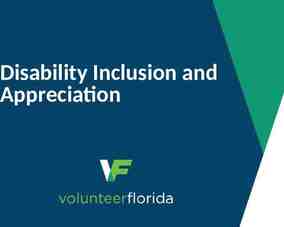Elder Abuse & Neglect “ It Happens At Home”
44 Slides2.79 MB

Elder Abuse & Neglect “ It Happens At Home”

WHAT IS ELDER ABUSE? Elder abuse is the mistreatment or neglect of an elderly person, usually by a relative or other caregiver. At greatest risk are the frail and/or isolated. Elder abuse may include physical violence, threats of assault, verbal abuse, financial exploitation, physical or emotional neglect, or sexual abuse.

Domestic violence among our older population is a reality as the population continues to age, the problem not likely to just disappear. 1990 - 4% of the population was 65 or older 2020 - 22% of the population will be 65 or older As baby boomers age, the need for services for abused individuals is likely to increase.

Many people believe that elder abuse happens in ( to quote elders) “one of those places” meaning of course, nursing homes or skilled nursing facilities. While some abuse does exist in these facilities, the majority of elder abuse, neglect and exploitation, occurs in the home.

Elder abuse is often compared to child abuse rather than spousal abuse. Certain symptoms can appear, such as changes in depth perception, confusion over when an event occurred, loss of control over bodily functions, and hearing loss. These can result in behaviors that some will want to identify as “”childlike.” Along with this attitude can come the imposition of the same kind of control used on children, including physical discipline.

Many older women do not identify themselves as abused. Some may see their relationship as normal. Many older women believe that battered women are exclusively young with children. Many older women were raised in a time when they were expected to stay at home and care for their children. Divorce was not considered socially acceptable.

Older women who have internalized rigid gender roles may be less willing to talk about their abuse or to seek help from community services. She doesn’t want to “air dirty laundry.” Adult children are often not supportive of change in their parents’ relationship. If the abuse has been hidden from the children for years, they may often refuse to believe it when they are told. In some cases the children have seen the mother suffering the abuse, have become accustomed to it, and resent the sudden rebellion.

Who are the Abusers? In 35% of the elder abuse cases in 30 states surveyed, the abuse was perpetrated by the victim’s adult children. The National Aging Resource Center on Elder Abuse estimates the incidence of abuse in domestic settings (not institutions) at approximately 2.5 million cases per year.

Prevalence According to the best available estimates, between 1 and 2 million Americans age 65 or older have been injured, exploited or otherwise mistreated by someone on whom they depended for care or protection. Estimates of the frequency of elder abuse range from 2% to 10% based on the survey methods and case definitions.

Data on elder abuse in domestic settings suggest that 1 in 14 incidents, excluding incidents of self neglect come to the attention of authorities. Current estimates put the overall reporting of financial exploitation at only 1 in 12 cases suggesting that there maybe at least 5 million financial abuse victims each year.

Facts and Figures The U.S. has 44 million persons age 60 or older, and 36 million people with disabilities. In the most recent year studied, Adult Protective Services completed 364,512 investigations of abuse, neglect, or exploitation involving older persons living at home (in private, non-institutional settings). Of these, an estimated 43% were confirmed. In the last decade, the number of domestic elder abuse reports investigated by Adult Protective Services across the nation has increased by more than 150 percent. Almost 62% percent of all cases of abuse, neglect, or exploitation of adults living at home involve mistreatment by other people and 38% involve self-neglect. Domestic elder abuse is a family problem – almost 90% of abusers were family members. Men were the abusers in over half of elder abuse cases.

Risk Factors For Abuse Physical or cognitive impairment of the victim The most likely victims are 75 and older Dependent on others for care and protection Isolation of the victim Gradually preventing access to the telephone Barring visitors or service providers Elder lives alone No family or friends Not known to any community agency

Caregiver stress Lack of skill in handling a frail person Unaware of community resources and respite programs Work outside the home Caring for children Fulfilling household duties Caregivers own frailty

Dependence of the abuser on the victim Financial dependence forcing families to live together Psychopathology or mental incapacity of the abuser Unresolved issues from childhood that affects personality and behavior Mental illness or mental retardation Alcohol or drug abuse

Types of Elder Abuse 1. Financial or Material Exploitation: the illegal or improper use of an elderly person’s funds, property or assets. Unusual or inappropriate activity in bank accounts. Signatures on checks, etc. that do not resemble the older person’s signature or signed when the older person cannot write. Power of attorney given, or recent changes or creation of a will, when the person is incapable of making such decisions. Unusual concern by caregiver that an excessive amount of money is being expended on the care of the older person. Numerous unpaid bills, overdue rent, when someone is supposed to be paying the bills for a dependent elder.

Lack of amenities, such as TV, personal grooming items, appropriate clothing, that the estate can well afford. Missing personal belongings such as art, silverware, or jewelry. Deliberate isolation, by a housekeeper of an older adult from friends and family, resulting in the caregiver having total control.

2. Emotional /Psychological The infliction of anguish, pain or distress through verbal or non-verbal acts such as: humiliating, insulting, name calling or threatening, treating like a child Helplessness Hesitation to talk openly Withdrawal Depression Implausible stories Fear Agitation Confusion Denial Anger

3. Neglect the refusal or failure to fulfill any part of a person’s obligations or duties to an elderly person; failure to provide necessary care Dirt, fecal/urine smell, or other health and safety hazards in elder’s living environment. Rashes, sores, lice Elder is inadequately clothed Elder is malnourished or dehydrated Elder has an untreated medical condition

4. Physical & Sexual any physical pain or injury which is willfully inflicted upon an elder by a person who has care or custody of, or who stands in a position of trust with that elder. This includes direct beatings, sexual assault, unreasonable physical restraint, and prolonged deprivation of food or water. Cuts, lacerations, puncture wounds Bruises, welts, discoloration Any injury incompatible with history Injuries not properly cared for

Poor skin condition, poor hygiene Absence of hair and/or hemorrhaging below scalp Dehydration and/ or malnourished without illness-related cause Loss of weight Burns, which may be caused by cigarettes, caustics, acids, friction from ropes or chains Soiled clothing or bed Genital bruising or irritation

5. Abandonment desertion or willful forsaking of an elder by any person having the care and custody of that elder, under circumstances in which a reasonable person would continue to provide care of custody.

6. Self Neglect behavior of an elderly person that threatens his or her own safety or health Inability to manage personal finances, e.g. hoarding, squandering, giving money away, failure to pay bills Inability to manage ADLs Suicidal acts, wanderings, refusing medical attention, isolation, substance abuse Lack of toilet facilities or animal infested living quarters

Rashes, sores, fecal/urine smell, inadequate clothing, malnourished, dehydration Changes in intellectual functioning, e.g. confusion, inappropriate or no response, disorientation to time and place, memory failure, incoherence, etc. Not keeping medical appointments Refusal of medication

Interviewing The Victim Denial is an important element in elder abuse both for the victim as well as the offenders. Many victims blame themselves and minimize the extent of the abuse. Feelings of victims: Shame or embarrassment Fear of retaliation Powerlessness

Interview all clients in private without the caregiver’s presence. The client should: Be treated with respect Be asked for permission to ask questions, examine injuries Be told that the person’s situation is one that you have seen before Be told that in many cases injuries are caused by someone in the elder’s family Be asked if the injuries were caused by someone that the victim knows

If the client has the capacity to understand the dangers of the abuse and the consequences of remaining in the abusive situation, efforts should be made to educate him or her about: The fact that assault is a crime The likelihood that the abuse will increase in frequency and intensity The abuser needs help that the victim cannot provide The need for a safety plan to get away the next time the situation becomes dangerous

The need for a safety plan to get away the next time the situation becomes dangerous The fact that the abuser is responsible for the violence not the victim The need for support from others

Indicators of Abuse from the Caregiver Elder not given opportunity to speak for him/herself or see others without the presence of the caregiver Attitudes of indifference or anger toward the dependent person, or the obvious absence of assistance Family member or caregiver blames the elder (e.g. accusation that incontinence is a deliberate act) Aggressive behavior by caregiver toward the elder

Previous history of abuse to others Problems with alcohol or drugs Inappropriate displays of affection by caregiver Flirtations, coyness, etc as possible indications of inappropriate sexual relationship Social isolation of family or isolation or restriction of activity of the older adult within the family unit by the caregiver

Conflicting accounts of incidents by family, supporters or victim Unwillingness or reluctance by the caregiver to comply with service providers in planning for care and implementation Inappropriate or unwarranted defensiveness by caregiver

OLDER ABUSE VICTIM PROFILE Female - Older women are less likely to resist abusive behavior and are more vulnerable to sexual molestations. Advanced Age - As people age they lose the capacity of physical strength to resist or defend themselves. Dependent - Older persons who depend on others for their care are more vulnerable.

Excessive loyalty - If the victim has a strong sense of loyalty to the care giver, he/she will probably not seek help. Stoicism - Some persons accept their troubles without seeking relief based on a philosophy, job, tolerance, resignation, or fear. Substance abusers - Older substance abusers are very susceptible to abusive behavior and are frequently self-neglectful

Impairment - the greater the infirmities of the one needing care, the greater the demand on the care giver. If the person’s infirmity includes mental impairment, it exacerbates the stress for the care giver. Poverty - Poverty is common among elderly which adds stress to the care giver.

WHAT CAN YOU DO? Elder Abuse is a serious offense. Report it to the Abuse Hotline at 1-800-96ABUSE

ACT SERVICES ALL SERVICES ARE FREE TO VICTIMS AND THEIR CHILDREN 24-HOUR HOTLINE 3 EMERGENY SHELTERS 24-HOUR ON CALL COUNSELING AND SUPPORT AT ALL LOCAL HOSPITALS, PHYSICIAN OFFICES, CLINICS, ETC. SAFETY PLAN AWARENESS INFORMATION AND REFERRALS ADVOCACY (Assisting clients with agencies/court system, etc.) SUPPORT THROUGH COURT PROCESS IN THE EVENT OF PROSECUTION

ACT SERVICES INFORMATION/ASSISTANCE IN OBTAINING INJUNCTIONS FOR PROTECTION ORDERS ONE-ON-ONE CONFIDENTIAL COUNSELING FEMALE, SENIOR, MALE DOMESTIC VIOLENCE SUPPORT GROUPS CHILDREN’S PROGRAMS RAPE COUNSELING AND SUPPORT GROUPS FORENSIC EXAMS AND FOLLOW-UP EXAMS AT RAPE CRISIS CENTER SUPPORT GROUPS FOR SIGNIFICANT OTHERS OF RAPE SURVIVORS

ACT SERVICES CERTIFIED BATTERER’S INTERVENTION PROGRAMS COMMUNITY EDUCATION / PROFESSIONAL TRAININGS MIDDLE & HIGH SCHOOL TRAINING PROGRAMS VOLUNTEER OPPORTUNITIES

QUESTIONS ABOUT MANDATORY REPORTING CONTACT THE LEGAL DEPARTMENT 24 HOURS A DAY 239-334-5382

IMPORTANT NUMBERS ABUSE COUNSELING AND TREATMENT, INC. (ACT) HOTLINE (239) 939-3112 ADMINISTRATION (239) 939-2553

I acknowledge receiving from Abuse Counseling and Treatment, Inc. Elder Abuse and Neglect/DV and I have read and understand the information set forth in the PowerPoint presentation. I understand it is my responsibility to bring questions to the Chief Executive Officer, supervisor or Community Education Coordinator if I do not understand or need clarification of any of this information. By signing this, I am verifying I have received and understand Elder Abuse and Neglect / DV I will receive a Certificate of Training for 2 hours. Employee’s Signature: Employee printed name: Date:










